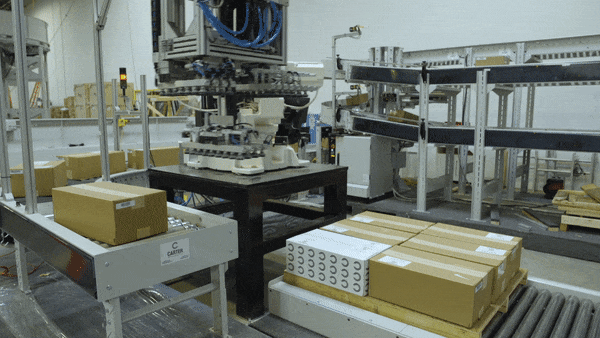5 Steps to Starting Your Automation Journey
“Automation is the future.”
If you have been a part of the material handling industry for the last decade or so you have undoubtedly heard that phrase at least once, but likely a dozen or more times. It’s because it’s true. We are seeing material handling operations trend toward replacing manual processes with streamlined, efficient automation solutions for jobs like picking, placing, sorting, palletizing, depalletizing and more. Automation can help companies save valuable time and money while achieving higher throughput rates, better safety standards for their workers, and an overall increase in the bottom line.

Automation can be intimidating when you are getting started. To be frank, automating a material handling operation is quite an undertaking and can be overwhelming. It doesn’t have to be that way. This article will cover 5 simple steps to get you started in the right direction on your automation journey.
Step One: Identify
The first step in the automation journey is to identify which processes you want to automate first. It’s important to note that you do not need to automate everything all at once. Instead, you should start small and pick something relatively simple. When working with clients brand new to automation, we recommend they start with the most time-consuming and repetitive processes in their operations and consider solutions that can replace them. Another good approach is to find out which processes are the most inefficient and target those.
Remember, automation is best used for repetitive processes that take up your workers’ time. It’s not suited for infrequent tasks or tasks that require any sort of flexibility in decision making. Be sure to consider this when identifying where your automation journey will start.
Step Two: Evaluate
After identifying what process(es) you are going to automate, you need to evaluate existing problems with them. The unfortunate fact of automation is that it won’t fix broken processes and workflows for you. What it can do is make a good process better. First things first, you’ll need to spend time evaluating and analyzing your current operation on the whole to identify issues, inefficiencies, bottlenecks or any other sort of problem that will slow your automated process down once established. From there, you’ll have a good baseline for implementing an automation solution that is going to help you at its full potential and not be held back by existing flaws in the system.
Step Three: Prepare
Once you’ve identified what process you’re targeting to roll out automation for and refined that process by fixing existing errors, the next step in the process is to prepare for your automation solution’s implementation and ensure the efforts outweigh the benefits. For example, you’ll need to figure out the optimal time for downtime while you install the solution. Furthermore, this new automation process will likely lead to new roles and responsibilities needed. A few things to consider when preparing to implement automation:
- Training for operating or maintaining the new equipment.
- Fear of automation-fueled job loss.
- Change in management may be in order.
Step Four: Choose
Finally, it’s time to pick which automation solution is right for the process. There are many different automation solution providers out there. One key thing to consider when selecting a vendor is your future plans. If you’re planning on expanding your automation capabilities in the future, it’s much easier to work with the same vendor throughout the entire process. Switching halfway through automating a facility can lead to incompatibilities in software or equipment that may end up costing extra to resolve. Our best advice is to take your time shopping around with different vendors until you find one that matches your automation needs and fits your price point.
Step Five: Implement
Congrats! If you’ve made it to step 5 then you are ready to install and get your automation solution improving your operation’s efficiency. Again, when first implementing your automation solutions, start small. During and after the implementation of your automation solution, be sure to continually monitor the performance of the solution and ensure it is fulfilling its role correctly. After this critical stage is over, continue refining your processes further and start seeking out the next opportunity to reap the benefits of automation.
We’re here to help.
Carter Intralogistics designs, manufactures, and implements warehouse automation solutions. We specialize in Motor driven conveyors, robotic solutions, and order fulfillment. No project is too large or too small and we understand how to provide a phased-in approach that allows future growth for our clients.
If you're taking your first steps into the world of automation, we may be a good fit for you. If you'd like to learn more about how Carter can help get you started on your automation journey, please contact us.


